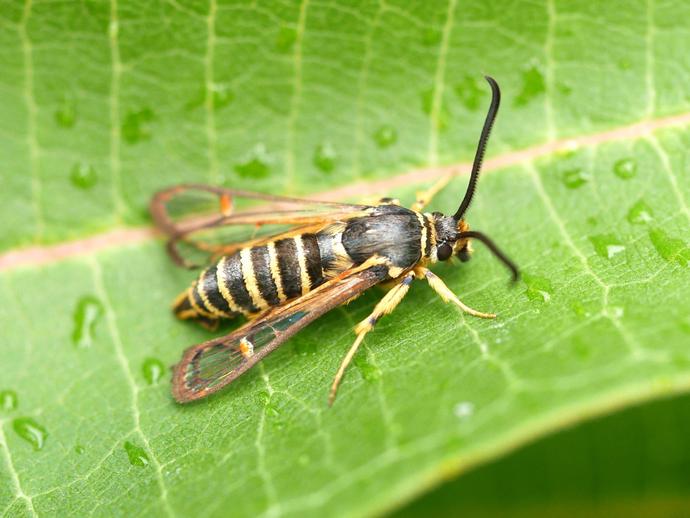August 21, 2020
"Ah," you are perhaps thinking to yourself, "it appears we're looking at another wasp today. I was hoping for something more exciting to close out my week."
Well buckle your seat belt, my friend, because this is a MOTH! Meet Pennisetia marginata, also known as the raspberry crown borer or blackberry clearwing borer.
These moths belong to the family Sesiidae, the clearwing moth family. Clearwing moths are a prime example of what's known as "Batesian mimicry," which is when a harmless species evolves to imitate the warning signs of a harmful species! By resembling a wasp, this moth has the benefit of being avoided by many predators without having to bother with developing defenses. Many of the moths in the family Sesiidae don't just mimic the appearance of wasps and bees, they also mimic the behaviors!
This particular species of clearwing moth is fairly widespread in the U.S. and southern Canada, and it has even been introduced in Hawaii. The larvae feed on the roots of plants in the Rubus genus, such as blackberry and raspberry. The adults can be found from July through September, and unlike many of the moths we're familiar with, they're active during the day.
Thank you to VMNH Associate Curator of Entomology Dr. Kal Ivanov for identifying this one for me! #BenInNature
ABOUT THIS POST
Social distancing can be difficult, but it presents a great opportunity to become reacquainted with nature. While he is working from home, Administrator of Science Ben Williams is venturing outdoors each day to record a snapshot of the unique sights that can be found in the natural world.
NATURE PHOTO IDENTIFICATIONS
If you discover something in nature that you would like help identifying, be sure to message us right here on Facebook with a picture (please include location and date of picture) and we'll have our experts help you identify it!

 Hours & Admissions
Hours & Admissions Directions
Directions

